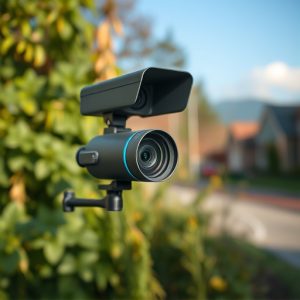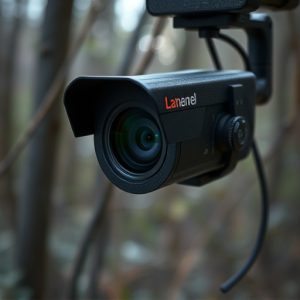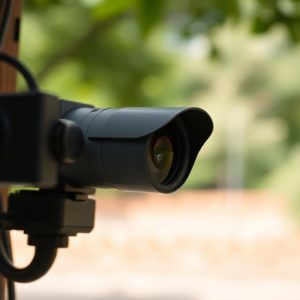Spotting Spy Lenses: Advanced Home Security Against Hidden Cameras
Tiny cameras for home monitoring, though discreet, can be compromised by spy lens reflections off re…….
Tiny cameras for home monitoring, though discreet, can be compromised by spy lens reflections off reflective surfaces. Homeowners and security professionals must understand light reflection principles and employ advanced detection techniques to identify these subtle patterns. Using tools like reflection analysis and thermal imaging, they can uncover hidden cameras, ensuring privacy in the digital age. A multi-layered approach including visual inspections, high-quality locks, surface treatments, strategic decor, and advanced security systems mitigates spy lens reflections for enhanced home security.
Uncover hidden threats with our comprehensive guide to spy lens reflection detection. Learn the basics of identifying subtle camera reflections, understand common hiding spots, and master advanced techniques to locate tiny cameras in your home. From recognizing unique reflection signatures to implementing robust security measures, this article equips you with knowledge to safeguard your privacy. Protect your space with effective strategies tailored for modern home monitoring using tiny cameras.
- Understanding Spy Lens Reflections: The Basics of Detection
- Common Places for Hidden Cameras and Their Reflection Signatures
- Advanced Techniques to Spot Tiny Cameras in Your Home
- Preventing and Mitigating Spy Lens Reflections: Security Measures at Home
Understanding Spy Lens Reflections: The Basics of Detection
Spy lens reflections, often invisible to the naked eye, pose a significant challenge in home monitoring using tiny cameras. These miniature devices, designed for discreet surveillance, can be easily obscured by reflective surfaces like glass windows or shiny metal objects within the field of view. When light bounces off these surfaces and back into the camera lens, it creates a subtle yet detectable reflection pattern that can compromise the privacy and security measures in place.
The detection process involves careful observation and advanced techniques to identify these reflections. Homeowners and security professionals alike must understand the basic principles of light reflection and how it interacts with cameras. By analyzing the intensity and patterns of reflections, one can pinpoint the exact location of hidden spy cameras. This knowledge is crucial for ensuring that tiny cameras for home monitoring remain effective, providing peace of mind without compromising privacy or exposing surveillance equipment.
Common Places for Hidden Cameras and Their Reflection Signatures
Hidden cameras, often referred to as tiny cameras for home monitoring, can be strategically placed in various locations to capture images or record videos surreptitiously. Common spots include corners of rooms, behind picture frames, door handles, light switches, and even everyday objects like plant pots or bookends. These devices are designed to be discreet, making them difficult to detect with the naked eye.
When these tiny cameras operate, they reflect light in unique ways, creating distinct signatures. Reflections on glass surfaces, for instance, can expose hidden cameras positioned behind them. Similarly, subtle distortions in images or unusual lighting patterns might indicate the presence of covert recording devices. Understanding these reflection signatures is crucial for home security enthusiasts to proactively identify and counter potential surveillance threats.
Advanced Techniques to Spot Tiny Cameras in Your Home
In today’s digital age, tiny cameras for home monitoring have become increasingly sophisticated, making their detection a complex task. Advanced techniques are required to uncover these hidden devices, which often employ innovative methods to evade notice. One such method is the use of reflection analysis, where experts examine subtle changes in light reflections on surfaces to identify unusual patterns indicative of camera presence. By studying the interplay of light and shadow, they can pinpoint the exact location of a spy lens, even if it’s hidden behind a mirror or painted over.
Additionally, thermal imaging technology plays a crucial role in this process. Spy cameras often generate heat, leaving distinctive thermal signatures that differ from their surroundings. With advanced thermography tools, professionals can detect these anomalies, revealing hidden devices that might be impossible to spot with the naked eye. This combined approach of reflection analysis and thermal imaging ensures a thorough search for tiny cameras for home monitoring, providing peace of mind in an era where privacy is a premium concern.
Preventing and Mitigating Spy Lens Reflections: Security Measures at Home
Preventing and Mitigating Spy Lens Reflections at Home involves implementing robust security measures to safeguard your privacy from hidden cameras, especially tiny cameras for home monitoring that can be discreetly placed. One effective method is regular visual inspections using natural light or specialized tools like infrared detectors, which can identify suspicious devices by their heat signatures. Securing common entry points such as doors and windows with high-quality locks and coverings can also reduce the risk of hidden cameras being installed without detection.
Additionally, utilizing reflective surface treatments on glass and other surfaces can help mitigate lens reflections. Anti-glare coatings or privacy filters designed to disrupt clear images can be applied to windows and screens. Inside your home, strategic placement of furniture and decor items, like heavy curtains or reflective art pieces, can further obscure potential spy lenses. Regularly updating security systems with advanced technology that includes motion detection and AI-powered analytics ensures a proactive approach to identifying and neutralizing hidden cameras, enhancing the overall security of your residence.
In conclusion, while tiny cameras for home monitoring offer significant benefits, they can also be covertly integrated into everyday objects, posing a challenge through spy lens reflection detection. Understanding basic principles, recognizing common places and advanced techniques, as discussed in this article, equips homeowners with the knowledge to proactively identify and mitigate potential security risks associated with these hidden devices. By staying informed about the latest detection methods, individuals can take crucial steps to protect their privacy and enhance home security.


